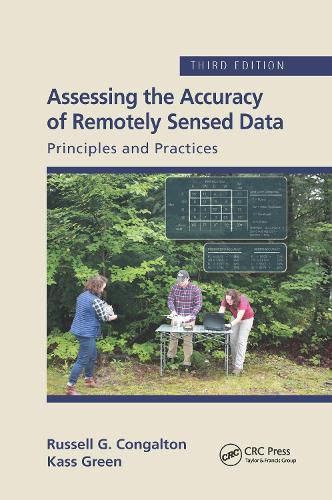Readings Newsletter
Become a Readings Member to make your shopping experience even easier.
Sign in or sign up for free!
You’re not far away from qualifying for FREE standard shipping within Australia
You’ve qualified for FREE standard shipping within Australia
The cart is loading…






The past 10 years have brought amazing changes to the technologies used to turn remotely sensed data into maps. As a result, the principles and practices necessary for assessing the accuracy of those maps have also evolved and matured. This third edition of Assessing the Accuracy of Remotely Sensed Data: Principles and Practices is thoroughly updated and includes five new chapters. Now 15 chapters long, this text is the only one of its kind to provide geospatial analysts with the requisite considerations, tools, and theory necessary to conduct successful and efficient map accuracy assessments; and map users with the knowledge to fully understand the assessment process to ensure effective use of maps.
See What’s New in the Third Edition:
All original chapters have been updated to include new standards, practices, and methodologies.
A new chapter on planning accuracy assessments.
A new chapter on assessing maps created using object-based technologies.
Two case study chapters - one showcasing the assessment of maps created from traditional methods, and one on the assessment of object-based maps.
Emphasis on considering and planning for positional accuracy in concert with thematic accuracy.
An appendix containing the internationally recognized ASPRS Positional Accuracy Standards.
A new final chapter summarizing the key concepts, considerations and lessons learned by the authors in their decades of implementing and evaluating accuracy assessments.
Assessing map accuracy is complex; however, the discussions in this book, together with the many figures, tables, and case studies, clearly present the necessary concepts and considerations for conducting an assessment that is both is practical, statistically reliable, and achievable.
$9.00 standard shipping within Australia
FREE standard shipping within Australia for orders over $100.00
Express & International shipping calculated at checkout
The past 10 years have brought amazing changes to the technologies used to turn remotely sensed data into maps. As a result, the principles and practices necessary for assessing the accuracy of those maps have also evolved and matured. This third edition of Assessing the Accuracy of Remotely Sensed Data: Principles and Practices is thoroughly updated and includes five new chapters. Now 15 chapters long, this text is the only one of its kind to provide geospatial analysts with the requisite considerations, tools, and theory necessary to conduct successful and efficient map accuracy assessments; and map users with the knowledge to fully understand the assessment process to ensure effective use of maps.
See What’s New in the Third Edition:
All original chapters have been updated to include new standards, practices, and methodologies.
A new chapter on planning accuracy assessments.
A new chapter on assessing maps created using object-based technologies.
Two case study chapters - one showcasing the assessment of maps created from traditional methods, and one on the assessment of object-based maps.
Emphasis on considering and planning for positional accuracy in concert with thematic accuracy.
An appendix containing the internationally recognized ASPRS Positional Accuracy Standards.
A new final chapter summarizing the key concepts, considerations and lessons learned by the authors in their decades of implementing and evaluating accuracy assessments.
Assessing map accuracy is complex; however, the discussions in this book, together with the many figures, tables, and case studies, clearly present the necessary concepts and considerations for conducting an assessment that is both is practical, statistically reliable, and achievable.